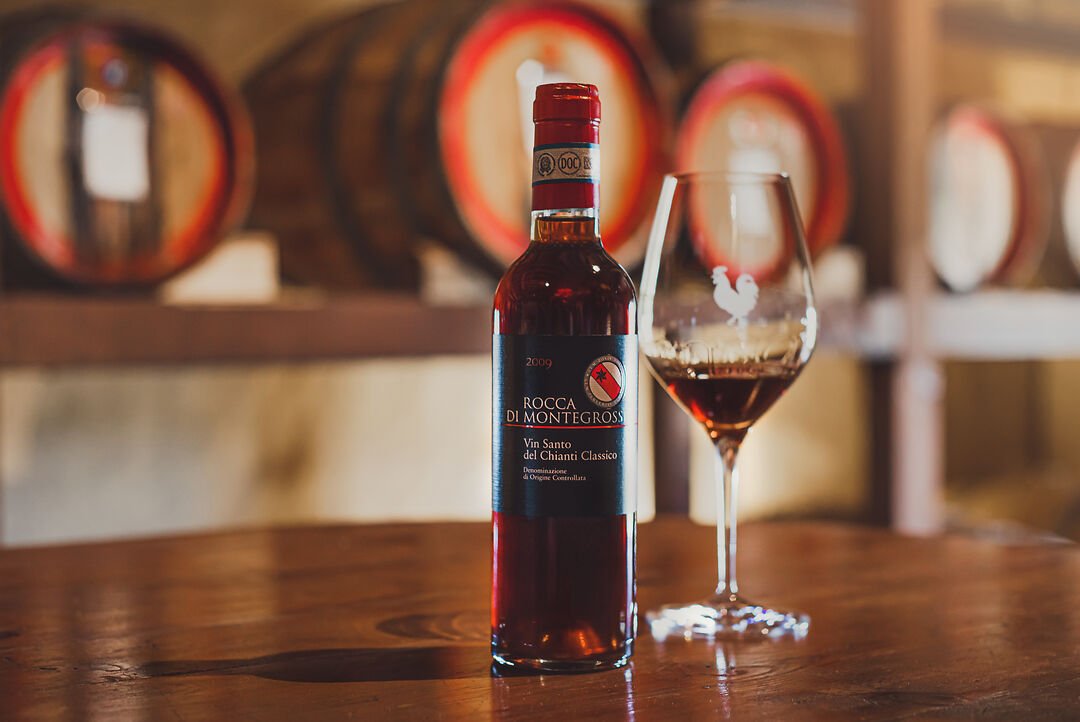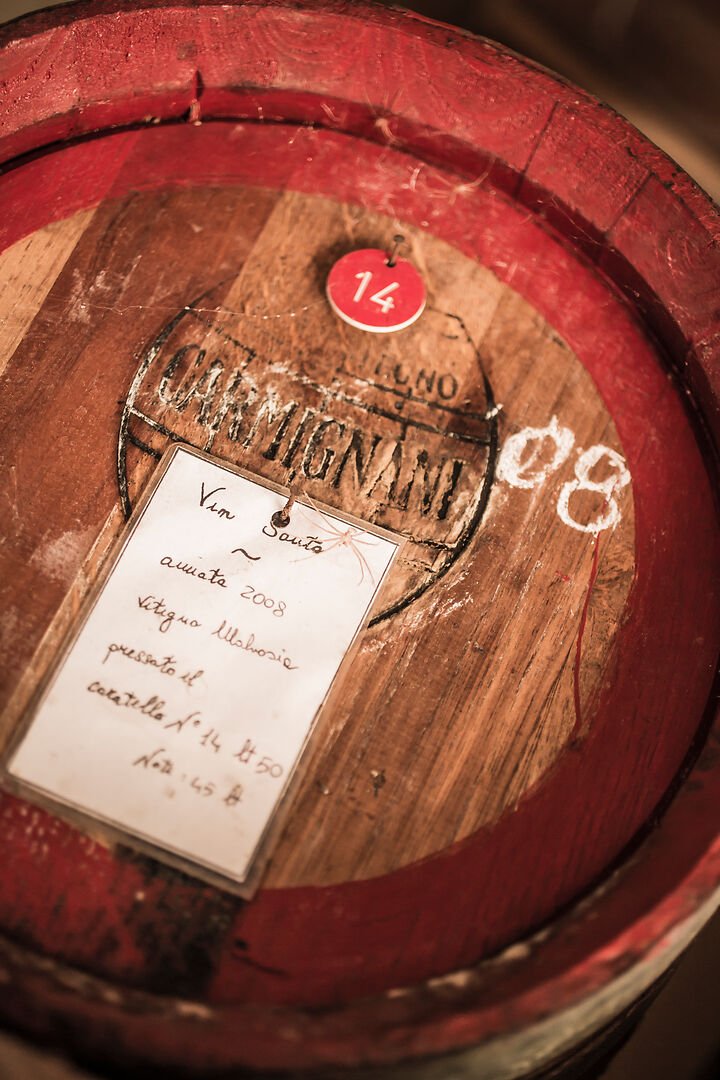
Rocca di Montegrossi
Monti in Chianti
Marco Ricasoli Firidolfi
In one of the most beautiful and probably most famous areas of Tuscany, in Chianti Classico, Italy's oldest wine region, the Rocca di Montegrossi winery is located approx. 7 kilometers south of Gaiole in the immediate vicinity of the village of Monti in Chianti. The owner of the estate is Marco Ricasoli Firidolfi, a descendant of the famous Tuscan Ricasoli family. This family is inextricably linked to the history of the region and Chianti Classico - after all, Bettino Ricasoli is considered the inventor of Chianti Classico. Here in Monti in Chianti, not far from Castello di Brolio, the passionate winemaker runs the winery with great attention to the balance between quality and tradition.
Rocca di Montegrossi
Rocca di Montegrossi extends over 100 hectares of land in the historic heart of Chianti Classico. Of this, 20 hectares are planted with vines and 20 hectares with olive groves, while the rest is wooded. The winery is located in a gently rolling landscape at an altitude of between 340 and 510 meters above sea level. The soils in this micro-region of Monti in Chianti consist mainly of calcareous and marly rock, which is rich in calcium and clay. This geological composition not only ensures optimal soil drainage, but also gives the wines their characteristic minerality, elegance and structure.
Chianti Classico
Marco Ricasoli Firidolfi primarily cultivates the Sangiovese grape variety, the leading variety of Chianti Classico, on an area of 13 hectares. However, indigenous varieties such as Canaiolo, Colorino, Pugnitello and Malvasia Bianco di Toscana can also be found here, as well as the international grape varieties Merlot and Cabernet Sauvignon. And right in the middle: The wine cellar, right next to the Romanesque parish church of San Marcellino. It is designed entirely to preserve the quality of the grapes and combines traditional techniques with state-of-the-art technology: cement tanks with glass linings and Allier oak barrels (fermentation racks), temperature-controlled and computerized. The stainless steel tanks are used exclusively for the production of Rosato.
Certified organic
The care and preservation of the Chianti cultural landscape and sustainability are of great importance to Marco. For many years, the farm has been run according to organic criteria and has been officially certified since 2010. Additional measures are also taken to protect nature and conserve resources: Rainwater is collected in cisterns to use for cleaning work in the cellar, and solar panels on the roof of the winery provide the energy to control the cellar temperature.
Geremia & Ridolfo
The rock castle Rocca di Montegrossi used to be the home of Geremia, the founder of the noble Ricasoli family. Today, all that remains of the castle are ruins. The current seat of the Ricasoli family is the Castello di Brolio in Gaiole in Chianti. The Rocca di Montegrossi winery honors Geremia with a Super Tuscan that bears his name and consists of a blend of 70% Merlot and 30% Cabernet Sauvignon. Geremia's son Ridolfo, to whom a wine has also been dedicated since 2015, stands for an exceptional blend of half Cabernet Sauvignon and half Pugnitello. This wine is bottled exclusively in magnum and jeroboam bottles.
San Marcellino
The Romanesque parish church of San Marcellino, which was built in the year 1000 AD, stands right next to the current winery of Rocca di Montegrossi. This church, once an important pilgrimage site, lends its name to the "Vigneto San Marcellino" wine. The grapes for this wine come from vineyards located below the historic church. More than 50-year-old Sangiovese and Pugnitello vines grow there, which give the wine a special depth and character due to their age and unique location.
Sweet gold
The Vinsanto from Rocca di Montegrossi is an outstanding sweet wine to which owner Marco devotes special attention. This wine is made from Malvasia Bianca grapes, which are hung to dry on around 160 soccer goal nets in a well-ventilated room under the roof. The grapes remain there until December or January before being pressed. The resulting must then matures in small barrels, known as caratelli, which are made from three different types of wood: Oak, cherry and mulberry.



















































The coronavirus pandemic is still keeping the world on tenterhooks. In Italy in particular, the virus has left its tragic mark - both in human and economic terms. And the situation is only slowly easing. In the meantime, as part of my #SehnsuchtChiantiClassico blog series, I have tried to tell you how my friends at the NinainChianti.com wineries are doing.